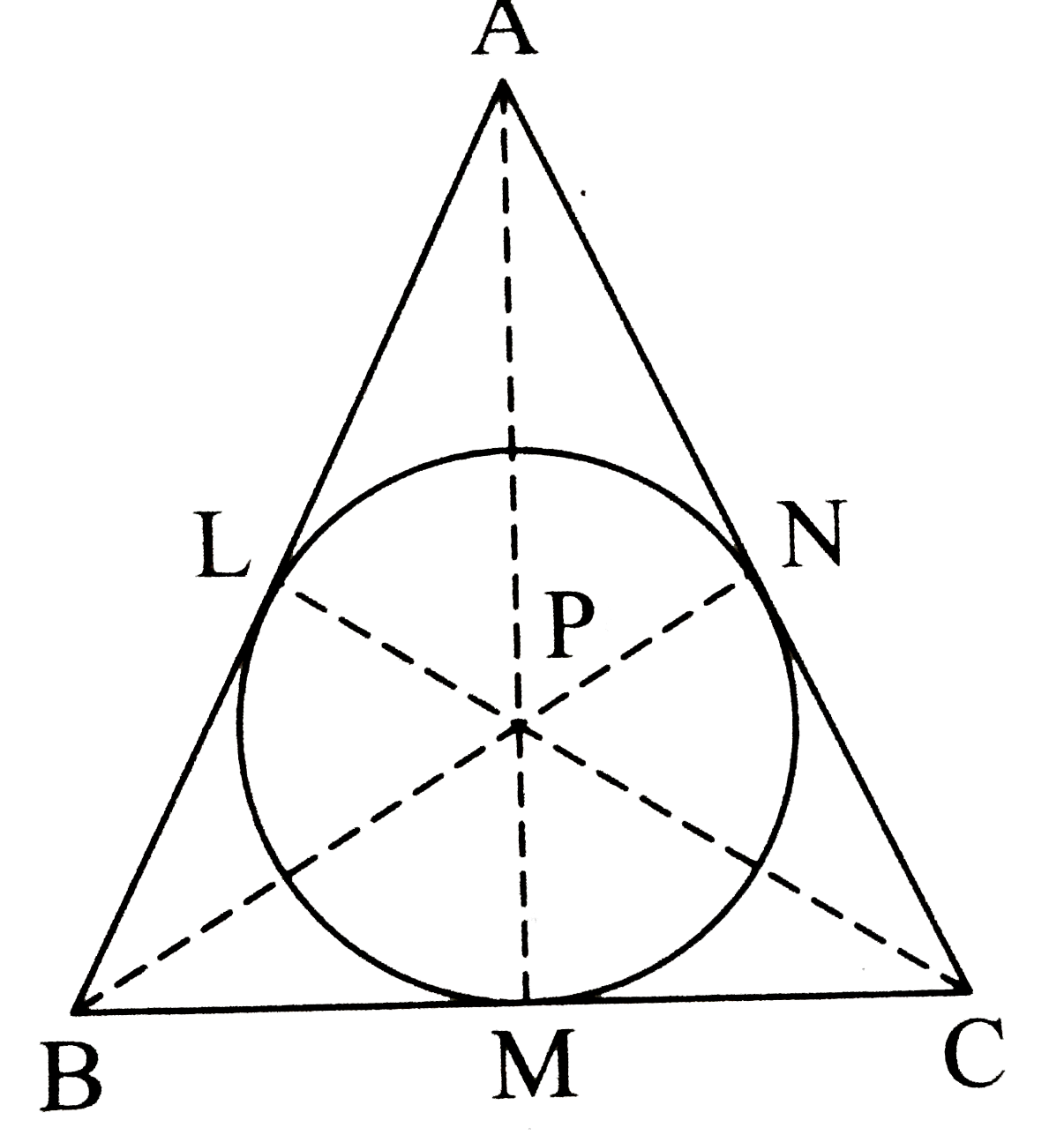Each side of ΔABC is the polarof the opposite vertex with respect to a circle with centre P. For the ΔABC the point P is Solution in Telugu
centroid
circumcentre
incentre
orthocentre
The correct Answer is:D
Step by step video, text & image solution for Each side of DeltaABC is the polarof the opposite vertex with respect to a circle with centre P. For the DeltaABC the point P is by Maths experts to help you in doubts & scoring excellent marks in Class 12 exams.
Topper's Solved these Questions
- BOOK - DIPTI PUBLICATION ( AP EAMET)CHAPTER - CIRCLEEXERCISE - Exercise 1D(Angle Between Circles)49videos
CIRCLE
- BOOK - DIPTI PUBLICATION ( AP EAMET)CHAPTER - CIRCLEEXERCISE - Exercise 2(Special Type Questions)5videos
CIRCLE
- BOOK - DIPTI PUBLICATION ( AP EAMET)CHAPTER - CIRCLEEXERCISE - Exercise 1B(Circle-Line)142videos
CIRCLE
- BOOK - DIPTI PUBLICATION ( AP EAMET)CHAPTER - BINOMIAL THEOREMEXERCISE - EXERCISE 2 (SPECIAL TYPE QUESTIONS) SET - 44videos
BINOMIAL THEOREM
- BOOK - DIPTI PUBLICATION ( AP EAMET)CHAPTER - COMPLEX NUMBERS EXERCISE - EXERCISE 2 (SPECIAL TYPE QUESTIONS) (SET - 4)5videos
COMPLEX NUMBERS
Similar Questions
The number of common tangents that can be drawn to the circles x2+y2−4x+6y+8=0,x2+y2−10x−6y+14=0
02:59View SolutionI : The equation of the circles cencentric with x2+y2−2x+8y−23=0 and passing through (2,3) is x2+y2−2x+8y−33=0
II. The equation of the circles passing through the points (1,1), (2,-1),(3,2) is x2+y2−5x+y+4=003:13View SolutionThe equation of the tangent to the cirele x2+y2−2x−4y+3=0 at (2,3)is
02:26View SolutionA : If the coefficients of 5th, 6th , 7th terms of (1+x)n are in A.P. then n=7or14.
R : If the coefficients of rth, (r+1)th,(r+2)th terms of (1+x)n are in A.P. then n2−(4r+1)n+4r2=2.04:25View SolutionA : If argument of z1=π/3 , argument of z2=π/4 then argument of z1z2 is 7π/12
R : Arg (z1z2)=Argz1+Argz202:33View SolutionA circle touches the side BC of DeltaABC at P and touches AB and AC produced at Q and R respectively. Prove that AQ=1/2(Perimeter of DeltaABC).
02:08View SolutionIn ΔABC,∠B=90∘. If P is the mid-point of side AC, then
PA=PB=07:41View SolutionThe mid-point of the sides of a ΔABC are D(6,1) ,E(3,5) and F(-1,-2) then the coordinates of the vertex opposite to D are
08:47View SolutionA line cuts two sides AB and AC of ΔABC at points P and Q respectively. Prove A(ΔAPQ)A(ΔABC)=AP×AQAB×AC.
04:17View SolutionA circle with centre P is inscribed in the ΔABC Side AB, side BC and side A C touch the circle at points L,M and N respectively . Prove that :
A(ΔABC)=12(AB+BC+AC)×r
 View Solution
View SolutionIn ΔABC , P is a point on side BC such that BP = 4 cm and PC = 7 cm.
A(ΔAPC):A(ΔABC) = ………………03:37View SolutionA line cuts two sides AB and side AC of ΔABC in point P and Q respectively.
Show that A(ΔABC)(A(ΔAPQ))=AP×AQAB×AC
 01:03View Solution
01:03View SolutionThe equations of the sides AB and CA of a ΔABC are x+2y=0 and x−y=3 respectively. Given a fixed point P(2, 3).
Q. If P be orthocentre of ΔABC then equation of side BC is :10:43View SolutionConsider the following statements in respect of an equilateral ΔABC.
I. There is a point P inside the ΔABC, such that each of its sides subtends an angle of 120∘ at P. II. There is a point P inside ΔABC, such that the ΔPBC, iis obtuse angled and A is the orthocentre of ΔPBC. Which of the above statements is/are correct ?03:12View SolutionEach side of ΔABC is the polar of the opposite vertex with respect to a circle with centre P. Then P is ortho centre of ΔABC.
04:28View Solution

